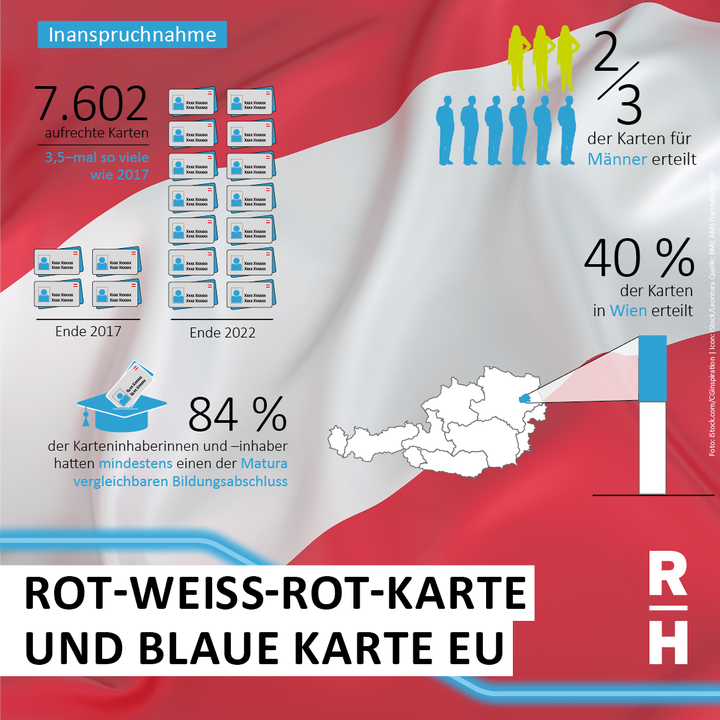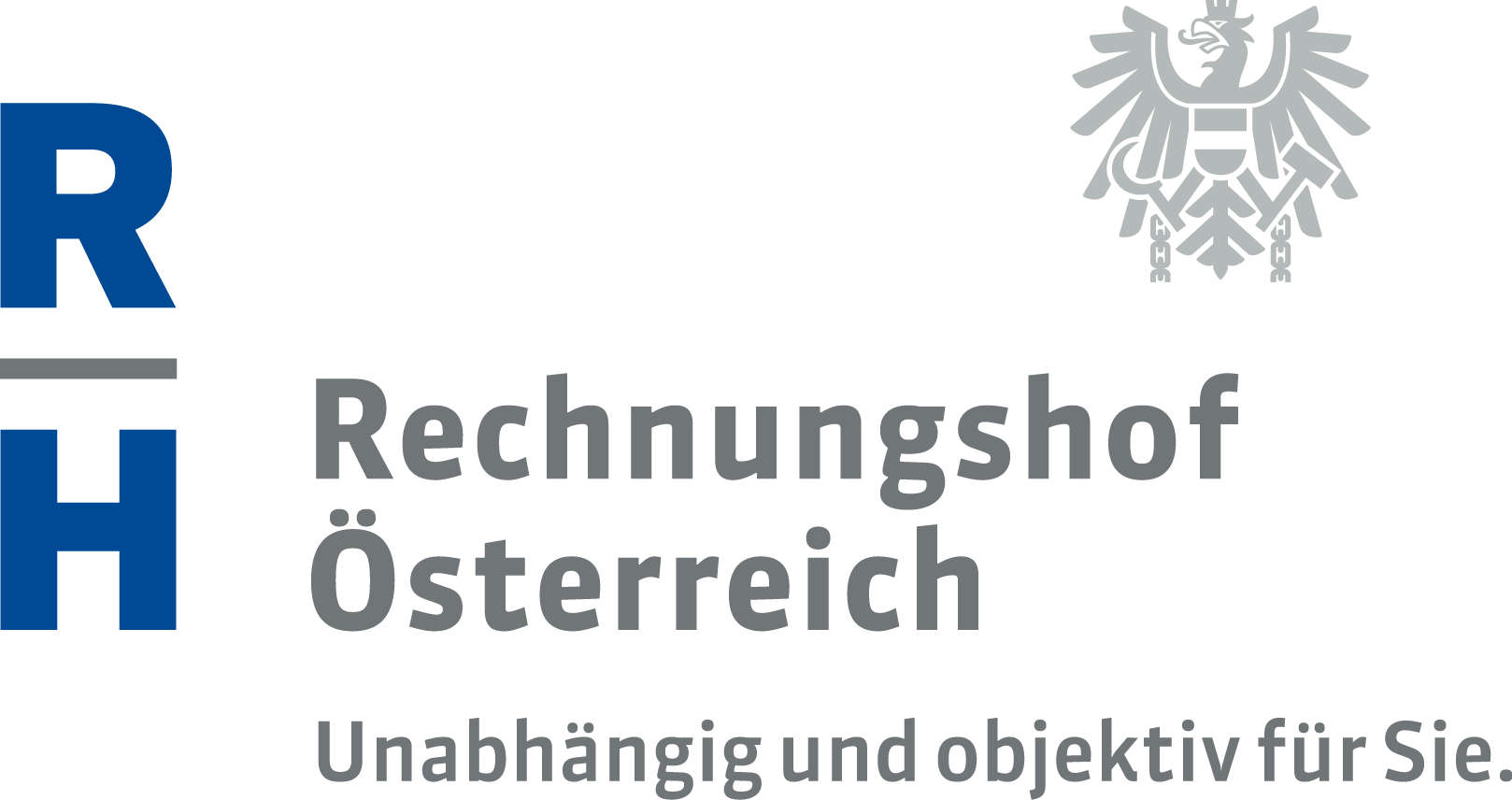ACA sees potential for simplification in Red-White-Red Card

The Red-White-Red Card (RWR Card) was introduced in 2011 to enable the immigration of skilled workers from third countries and to promote Austria as an attractive location for this target group. However, in its report “Red-White-Red Card and EU Blue Card” („Rot-Weiß-Rot-Karte und Blaue Karte EU“) published today, the ACA ascertained that the underlying system is complex and hard to understand for applicants. It is challenging to discern between the different types of cards – five types of Red-White-Red Cards and the EU Blue Card. Moreover, there are many overlaps regarding the requirements for qualification and skills as well as the target groups.
In 2022, the total number of valid cards was 7,602 – a 3.5-fold increase since 2017. This steep growth is in line with the rise of open positions, i.e. the needs of the labour market and the overall economic development. The audit focused on the year 2022 and the first quarter of 2023 with respect to the application process. Regarding the system as a whole and the take-up-rates, it covered the period from 2011 (introduction of the RWR card) until the first quarter of 2023.
Immigration of qualified third-country nationals is one of many measures to reduce the shortage of skilled labour. The RWR Card and the EU Blue Card are combined work and residence permits that entitle the holder to a temporary stay in Austria (usually for a two-year period) and to employment with a specified employer. Applications may also be submitted by the future employer.
Since its introduction, the instrument has been revised several times, mainly with the aim of removing bureaucratic obstacles for qualified immigrants. However, there are hardly any objective findings on the practical implications of these revisions.
Different types of cards are challenging to discern
Five different types of Red-White-Red Cards and the EU Blue Card are available for third country nationals seeking dependent employment in Austria. This excludes the permits granted by special (usually simplified) procedures for specific groups such as researchers, diplomats and artists. The types of cards vary regarding the stringency of the requirements, in particular in terms of training, work experience, minimum salary, language skills and age.
The system combines criteria which are generally comprehensible from a labour-market perspective, and take into account the availability of workers on the Austrian labour market. However, the different types of cards are challenging to discern, making it difficult for applicants to decide which card to apply for. At the same time, the system is inflexible in the sense that applications can only be made for one particular type of RWR card. It is hardly possible to compensate shortcomings in one area with a particularly high score for other criteria (such as a particularly high income). A language level of B2 (upper intermediate) or higher does not lead to a higher score under any circumstances.
The ACA recommends to take steps toward a simplification and possible flexibilization of the system to increase transparency and comprehension. Possible options include a clearer structuring of the requirements and a better distinction between the types of cards. For example, this could be achieved by a clearer definition of target groups with a corresponding system of criteria and scores. A more flexible system could also be envisaged, combining a set of minimum criteria (as a baseline) with a scoring system for an overall assessment of the most relevant criteria for labour market integration (such as formal training, salary and language skills).
Steep increase in cards issued
In 2022, a total of 5,157 RWR Cards and EU Blue Cards were issued, while the total number of valid cards was 7,602. This equals an increase by 4.5 times since 2012 (one year after the introduction of the card) and by almost 3.5 times since 2017. The RWR Card for Skilled Workers in Shortage Occupations and the RWR Card for Other Key Workers were most sought-after. Together, these two types corresponded to 69 percent of all cards issued in 2022.
In 2022 and in the preceding years, the highest number of cards – or 40 percent – was issued in Vienna. 47 percent of all RWR Cards were granted for technical professions (especially in the IT field) and 9 percent for health professions. The applicants’ average level of education was above the general level of employees in Austria: 84 percent had at least attained a formal qualification equivalent to the Austrian secondary school leaving certificate (Matura). Two thirds of all cards were issued to male applicants. Citizens of 91 nations were granted a RWR Card or a Blue EU Card in 2022, with nationals of Bosnia and Herzegovina, India and the Russian Federation ranging on top. In the absence of analyses, it remained unclear if the cards were issued for those professions where the need is greatest.
The ACA will issue a separate report on skill shortage.
Complex bureaucratic procedures require joint IT applications
Applications for RWR Cards and Blue EU cards are processed by at least two different state agencies (or three authorities in case of an application abroad). This complex procedure is due to the need to verify applications from a security perspective as well as compliance with labour market regulations. The key players involved – immigration offices as well as the Public Employment Service Austria (AMS) – handle their respective parts of the procedure in separate IT systems with no interface. No joint IT application was available to handle the applications.
In the ACA’s view, the joint use of the processing platform „Anwendung für Niederlassung und Aufenthalt“ (AnNA) could be a starting point for simplification. This central IT system is at the authorities’ disposal since the end of 2022. The AMS, however, was not connected to the AnNA. Information and documents were transmitted between the documents by email or – in individual cases – by post.
The ACA recommends to the Ministry of the Interior, the Ministry of Labour and the AMS to upgrade AnNa in cooperation with the federal province with a view to creating a joint processing and controlling system for all state agencies concerned. This should ensure a secure, largely automated data and document transfer between the immigration offices and to the AMS. AnNa should also allow for standardized controlling of the duration of proceedings, from application to completion
No data available on duration of proceedings
At the time of the audit, the Ministry of the Interior did not dispose of data on the total duration of the proceedings regarding RWR Cards and EU Blue Cards. There was no overall controlling of the proceedings. The ACA’s evaluation of the available data suggests that the legally prescribed duration of eight weeks may be exceeded in more than 40 percent of all cases.
- pdf Datei:
- 3,226.4 KB
- Umfang:
- 106 Seiten


